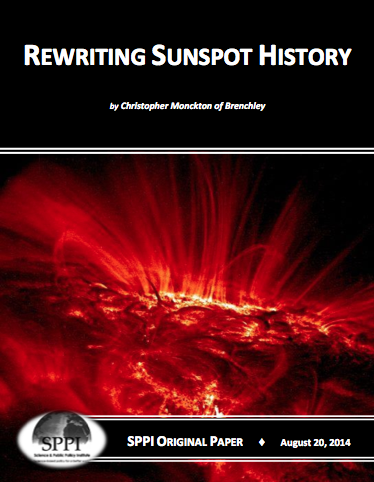News / Science & Technology
REWRITING SUNSPOT HISTORY

In 2006, when I first made the mistake of writing publicly of my doubts about the Party Line on manmade global warming, I began to receive 100 emails a day from interested members of the public – and of the scientific community. I have been doing my best to answer the best of them ever since.
One was from Dr. Dennis Ray Wingo of NASA. He told me the magnetic convection currents beneath both hemispheres of the Sun had slowed to walking pace. This was unprecedented in the record. He expected that solar cycles would lengthen and the vigor of solar activity would decline, perhaps for up to 60 years.
Dr. Willie Soon also wrote to say that solar activity was likely to decline. He had reviewed 250 years of sunspot records and had concluded that the recent lengthening of the solar cycles would weaken them, and that this weakening, for which the models had made little allowance, might be enough to cancel the influence of global warming.
Many others sent similar analyses. Sure enough, the last solar cycle was at least three years longer than average. The present cycle bids fair to be longer still. While there has been much excitement about the recent peak of the present solar cycle, the significance of the peak is not its magnitude (which is considerably below that of the previous cycles) but its lateness.
If the solar cycle peaks late, it may well end late. If it does, more solar cooling is to be expected. And that is very bad news for the usual suspects. In 1990 the IPCC predicted, with what it called “substantial confidence”, that global warming of 1 Celsius degree (plus 50% or minus 30%) would occur by 2025.
We are only ten years shy of 2025, yet the warming since 1990 is just one-third of a degree. To catch up with the IPCC’s projection, we should need to see two-thirds of a degree in the next decade. Yet the previous record warming rate was just 0.43 degrees per decade, and that record was set when solar activity was increasing rapidly from 1695-1735 at the end of the Maunder Minimum.
